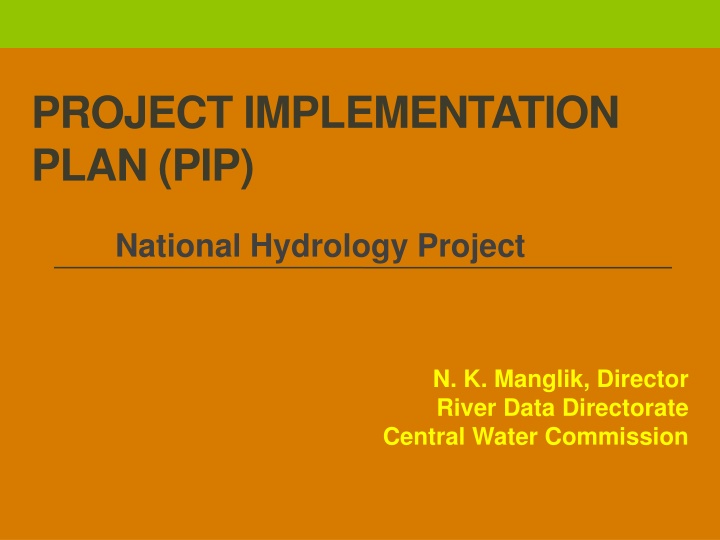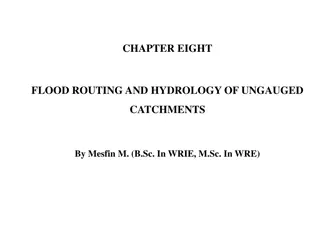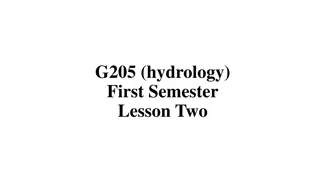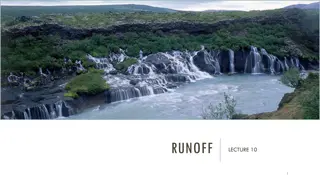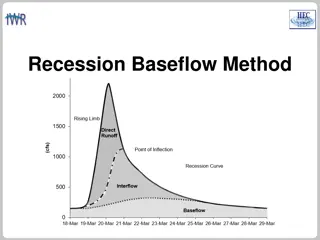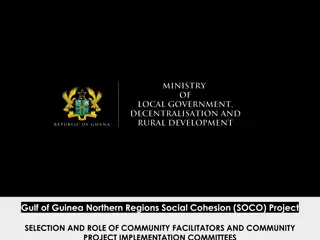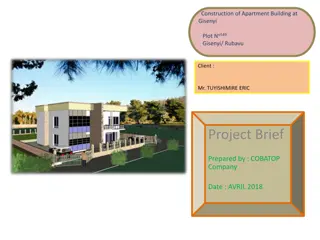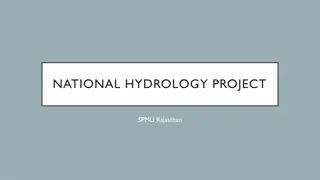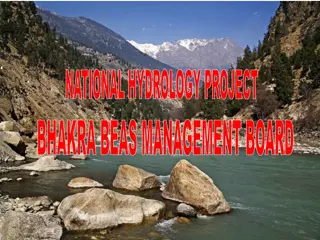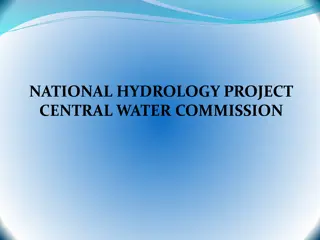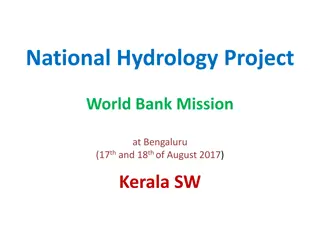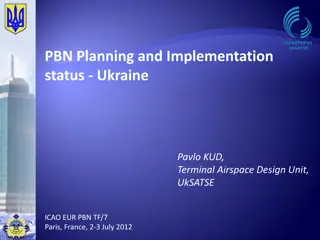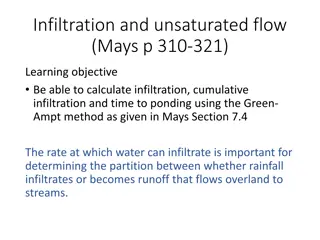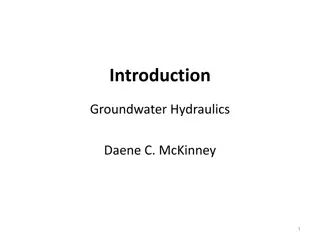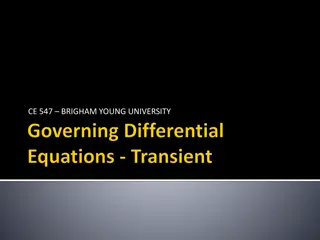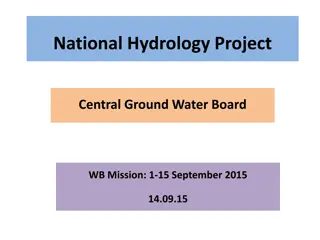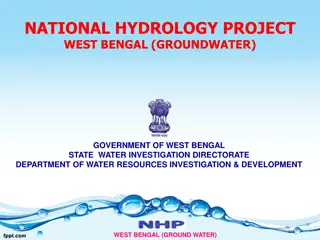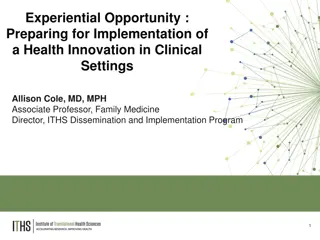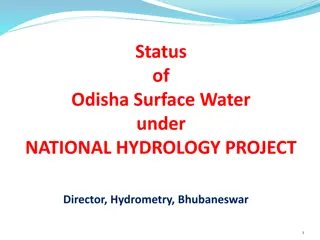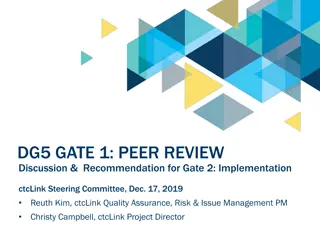National Hydrology Project Implementation Plan by N.K. Manglik
The National Hydrology Project, led by N.K. Manglik, aims to enhance hydrological forecasting and management in India. The Project Implementation Plan includes activities like flash flood guidance, basin-wise prediction models, and strengthening water technology centers. With a focus on flood management, water availability modeling, and aquatic life assessment, the project is crucial for sustainable water resource management in India.
Download Presentation

Please find below an Image/Link to download the presentation.
The content on the website is provided AS IS for your information and personal use only. It may not be sold, licensed, or shared on other websites without obtaining consent from the author.If you encounter any issues during the download, it is possible that the publisher has removed the file from their server.
You are allowed to download the files provided on this website for personal or commercial use, subject to the condition that they are used lawfully. All files are the property of their respective owners.
The content on the website is provided AS IS for your information and personal use only. It may not be sold, licensed, or shared on other websites without obtaining consent from the author.
E N D
Presentation Transcript
PROJECT IMPLEMENTATION PLAN (PIP) National Hydrology Project N. K. Manglik, Director River Data Directorate Central Water Commission
Project Implementation Plan (PIP) ALLOCATION FOR CWC IN NHP - 275 cr
Activities proposed to be carried by CWC Flash flood guidance coupled with weather forecast Inundation modeling including cyclone related floods in delta regions Basin-wise Extended Hydrologic Prediction model along with DSS (yield forecasting) for medium & long term forecast
Activities proposed to be carried by CWC Extension of eSWIS Development of Regional Models for water availability Development of aquatic life assessment in major rivers of India Preparation of reference Evapo-transpiration Atlas for country
Activities proposed to be carried by CWC Physically based mathematical modelling for sediment rate estimation and sediment transport in the river basin Strengthening of India-WRIS Water Technology Park/Center of Excellence at Hyderabad Balance work/Continuation of HDA-SW Activities- Capacity building of State
Flash flood guidance coupled with weather forecast AREA-2.48 Lakh SqKm
Flash flood guidance coupled with weather forecast SN Basin/Reaches/ state SN Basin/Reaches/state SN Basin/Reaches/ state 1 Bhagirathi 7 Nagaland 13 Teesta 2 Alaknanda 8 Indus 14 Subansiri 3 Beas 9 Arunachal Pradesh 10 Sharda 15 Lohit 4 Chenab 16 Siang 5 Jhelam 11 Gandak 17 Dibang 6 Tawi 12 Kosi
Inundation modeling including cyclone related floods in delta regions AREA-1.36 Lakh SqKm
Inundation modeling including cyclone related floods in delta regions SN Basin/Reaches/state S N Basin/Reaches/state Mahanadi Delta 4 Rapti 1 Godavari Delta 5 Ghaghra 2 Lower Brahmaputra in Assam 3
Basin-wise Extended Hydrologic Prediction model AREA-10.85 Lakh SqKm
Basin-wise Extended Hydrologic Prediction Objectives The system will be for 5/10 days lead-time forecast (medium and long term) along with DSS creating an enhanced probabilistic river flow forecasting scheme. At weeks to seasonal time scales, some of the points envisaged to be answered in a basin would be: Given the current hydrologic condition of a river basin, how much water losses can be anticipated in the water conductor system and what is the likely spatial distribution of the losses? How much is the likely inflow Next week? Next month? Next season? What is the range of uncertainty of the likely inflow and how best can this knowledge can be integrated into water allocation and water delivery planning?
Basin-wise Extended Hydrologic Prediction SN Basin/Reaches/state SN Basin/Reaches/state Damodar Basin Krishna 1 5 Cauvery Basin Godavari 2 6 Chambal Basin Ken Betwa 3 7 Narmada/Tapi Basin Mahi 4 8
PROPOSED TOTAL AREA COVERED AREA-14.7 Lakh SqKm
Flood Forecasting by CWC Present network- 176 Level Forecast -148 Inflow Forecast- 28 It involves: 21 divisions 10 Major River Basins 72 sub basins 19 states/UTs
Flood Forecasting Network of CWC Basin wise FF Stations No of Inflow Forecast No of Stage Forecast No of FF Stations 100 90 10 80 70 60 50 40 27 30 4 20 6 6 1 3 1 5 10 77 1 8 14 3 9 1 0 Barak Rivers(Pennar) Eastern Rivers Indus(Jhelum) Ganga Mahanadi Godavari Krishna West Flowing Rivers Brahmaputra Southern River Basin
Flood Forecasting Network of CWC State wise FF Stations No of Inflow Forecast No of Stage Forecast 40 1 35 32 No of FF Stations 30 24 25 20 15 1 3 2 10 5 3 4 4 3 5 1 1 2 2 5 1 6 1 1 1 2 7 11 4 3 34 11 1 0 Chhatisgarh Uttar Pradesh Madhya Pradesh Karnataka J&K West Bengal Orissa Maharashtra Uttarakhand Telangana Tripura Dadra & Nagar Haveli Bihar Assam Jharkhand Haryana Andhra Pradesh NCT Delhi Gujarat State
Proposed Flood Forecasting Sites of CWC During 12th Plan 16 Total-100 Inflow-62 Level-38 1 14 12 5 2 10 NO. OF SITES 8 4 14 3 6 10 9 2 4 5 5 1 5 5 5 2 4 3 3 2 2 2 2 1 1 1 1 1 1 0 J&K Bihar Jharkhand Sikkim Telangana Ar P TN AP Gujarat HP UP Assam Karnataka MH Rajasthan UK MP Kerala Odisha STATES Inflow Forecast Level Forecast
IWRM plan 10 basins (Five in first phase of 3 year and remaining 5 in second phase). SN Basin (Ist Phase) SN Basin ( IInd Phase) 1 Tapi Sone Upper Godavari (upto Maharashtra) Upper Mahanadi (upto Hirakud Dam) Pennar Subernrekha Damodar 6 7 2 2 Bharthapuzza Teesta Chambal 8 9 10 4 5
Extension of eSWIS Development of SMS based Applications for communication of Data. Inclusion of Inventories of HO & Met equipment at each site. linkage with India-WRIS Integration with ERS Linkage of product/output of models developed in HP-III
Data flow using INSAT INSAT satellite antenna YAGI Data Collection Platform (DCP) Sensors ERS at JAIPUR, BURLA and DELHI State Data Center Server with eSWIS software Other Data Server with eSWIS software Cloud server Cloud server Backup Server
Data flow using VSAT Data Collection Platform (DCP) Sensors State Data Center Other Data Server with eSWIS software Cloud server Backup Server
Data flow using GSM Data Collection Platform (DCP) Sensors State Data Center Other Data Server with eSWIS software Cloud server Backup Server
India-WRIS/NWIC Creation of State Nodes of India-WRIS Development of Web Services Support for creation of State-WRIS Linkages of various models/outputs
Development of Regional Models for water availability For assessment of Monthly/ Annual yield series for ungauged catchments using basic meteorological & geographical characteristics of the region. SN Basin/Regions SN Basin/Regions Ravi and Beas Brahamputra (Teesta, Subansiri and Debang sub-basins) Mahanadi 6 7 Narmada Mahi and Kuch & Saurashtra 1 2 8 Subernrekha, Baitarni Three sub-basin of West flowing rivers A&N Islands Lakshadweep Brahimini & 3 Krishna 9 4 Kaveri, Pennar, Palar & other East flowing Rivers 10 and 5
Development of Regional Models for water availability Scope of work: Establishment of Distributed hydrological model for the basin after calibration and validation Identify the dependent parameters for assessing yield series Climate parameters-monthly precipitation, monthly temperature, mean annual rainfall/snowfall etc Land use parameters- percent cropped area, forest area etc Basin characteristics- watershed area, relief etc Derive regression equations for assessing yield on monthly basis and monsoon period Integrate the regression models with HDA-SW or other GUI platform Prepare report including user manual and examples
Development of aquatic life assessment in major rivers of India Mapping of aquatic life of major rivers in the country Assessment of habitat requirement i.e. depth, velocity top width, Temperature, water quality etc for survival of aquatic life. SN Basin/Regions SN Basin/Regions Satluj 4 Godavari 1 Narmada 5 West flowing rivers 2 Brahmaputra 3
Physically based mathematical modelling for sediment rate estimation and sediment transport in the river basin SN Basin/Regions SN Basin/Regions Ramganga Basin 4 Three sub-basin of West flowing rivers Kuttiadipuzha Peechi Mangalam Barak Basin 1 Tapi Basin Mahanadi 5 2 3
Physically based mathematical modelling for sediment rate estimation and sediment transport in the river basin It aims at assessment of sediment generation from watershed/sub-basin and its transport to desired location. The scope of work includes: Establishment of Distributed hydrological and sediment model for assessing the sediment generation from various parts of watersheds /sub-basin and sediment transport Indentifying the critical areas contributing to the sediment generation Prepare broad sediment management plan
Development and preparation of Evaporation Atlases Evapo-transpiration is a major component of Water Balance and approximately 50-60 % of the overall precipitation gets lost as ET. Proposed to capture both Actual & Potential Evapo- transpirations through various mathematical models & prepare ET Atlas for India for a 0.5ox0.5o or finer resolution. Scope of the Work would include: Identification of appropriate methodology for estimating Potential Evapo-Transpiration based on data availability including use of remote sensing data. Establishment of parametric evapo-transpiration model based on the dominating variables in the region for estimating ET Validation of model based on observed data available for AET (measured values from Lysimeter & Field Plots) Estimation of ET for the country at appropriate temporal ( say fortnightly) and spatial resolution and prepare ET Atlas for the country.
Hydro-meteorological Data Dissemination Policy, 2013 Region-I: Indus basin & other rivers and their tributaries discharging into Pakistan; Region-II: Ganga-Brahmaputra-Meghna basin & other rivers and their tributaries discharging into Bangladesh/Myanmar; Region-III: Remaining other rivers and their tributaries. The data of Region-I and II are classified, whereas the data of Region-III is unclassified.
Hydro-meteorological Data Dissemination Policy, 2013 Reservoir water level, live storage position, water quality, groundwater and meteorological data for all regions are unclassified. All metadata including yearly average data and historical important data (such as Highest Flood Level, yearly flood peak, etc.) are also unclassified. sharing of unclassified data on real time basis can be done. For classified data: Historical Data can be provided on case to case basis as per procedure. Sharing of Real time data is the policy issues and has to be decided accordingly.
INVOLVEMENT OF STATES Flood Forecasting Models for each basin would be developed in the Central Water Commission through consultancy. CWC will share the flood data and model output with States. The involvement of State Government is required for effective flood management and effective implementation of the project. Sharing of Hydro-meteorological, topographical and utilization data available with states.
INVOLVEMENT OF STATES Involvement of states officials during development of the model At the end of each major milestone, training/workshop will be conducted to explain the status of the project, activities carried out in detail and sharing the experience faced during that period. Final model and inundation map libraries will be shared with the state agencies Operational training on the model running and result dissemination will be provided to states officials. During the Maintenance Phase Workshop/Conferences will be conducted to discuss the challenges faced and success stories in the particular years.
